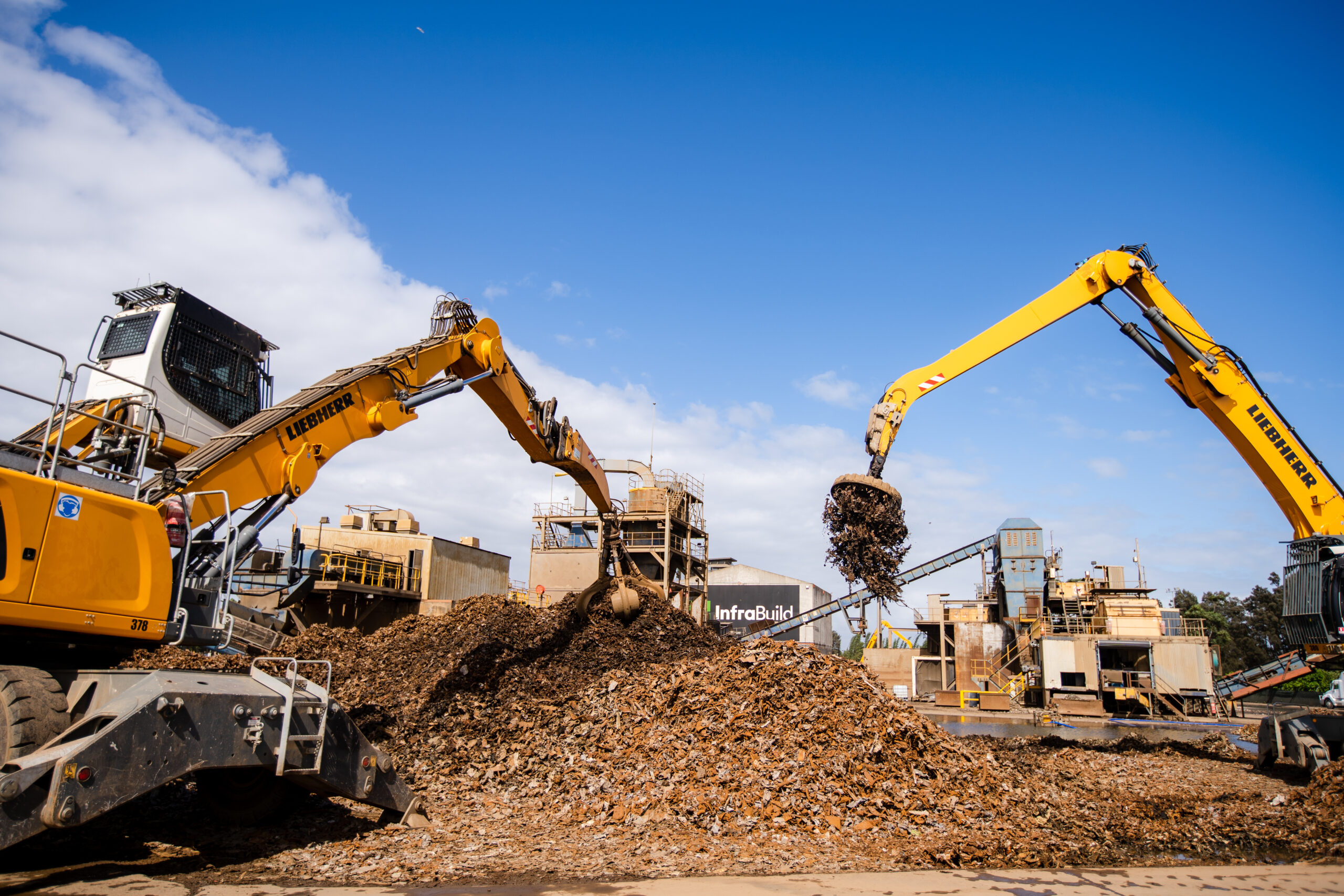
Steel is a building block of society; our transport network, our hospitals, our schools, our stadiums and cinemas and our homes are built on foundations of steel.
And steel will continue to play an essential role in helping shape our nation’s future.
In fact, steel demand is predicted to increase significantly by 2050.
As Australia celebrates National Recycling Week, it’s important to recognise one of steel’s greatest qualities; it is infinitely recyclable. In fact, steel can not only be recycled to make new steel, but it can be upcycled to produce a higher quality of steel.
The primary way this is done is via electric arc furnace-based steelmaking processes, which many steel manufacturers globally are transitioning to – or preparing to transition to – as the industry pursues a decarbonised future.
At InfraBuild, we’ve been using electric arc furnace-based processes to manufacture steel as part of our long-standing vertically integrated operations for almost 40 years. These operations comprise recycling, manufacturing and distribution and processing.
As more companies, globally, adopt these processes, demand for recyclable scrap metals will continue to grow.
At our recycling sites, including our Hexham facility, we source scrap metals through local recycling solutions for households, local government, mining, demolition, automotive and waste companies.
In the past year, these facilities have recovered about 1.4 million tonnes of recycled metals across the country.
We then use this scrap metal to manufacture steel billets at one of our two electric arc furnaces at Laverton in Victoria and Rooty Hill in New South Wales.
These billets are then used by InfraBuild and other fabricators to manufacture products which are used in everything from bedding springs and agricultural fencing to the reinforcing in large scale projects, which in recent years has included the Sydney Metro and Brisbane’s Cross River Rail projects.
This marks steel’s full journey in the circular economy – steel that may have once been part of a fridge is shredded and combined with a host of other scrap metals to make new steel which is then manufactured and sold back into the market in another product.
It is this notion of the circular economy which makes recycling so important. As more steelmakers adopt electric arc furnace-based methods like ours, demand for scrap will continue to grow.
Which is why it’s so important we all play our part to contribute to the circular economy by recycling our steel appliances and products to help manufacture lower embodied carbon steel.
Then businesses like ours can continue to provide a pathway from collection, to processing and ultimately transforming scrap metal into a valuable resource and providing a socially, environmentally, and economically responsible alternative to landfill.
Our vertically integrated domestic supply chain includes 26 scrap metal recycling sites across Australia. Find your local Recycling site.
Please contact us for any feedback or media enquiries about this content.
Subscribe to the
InfraBuild newsletter
Receive regular updates on news, case studies as well as the latest products and services.
